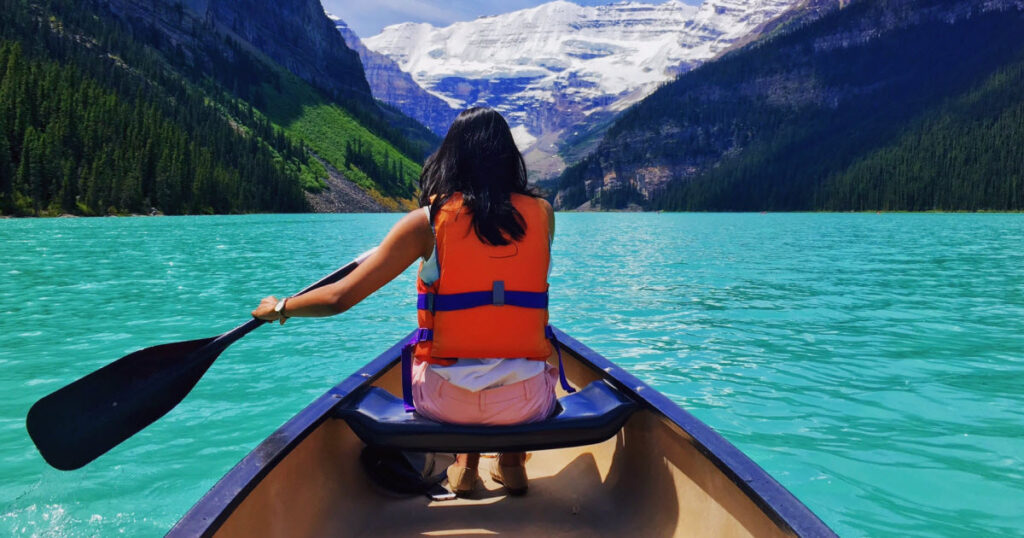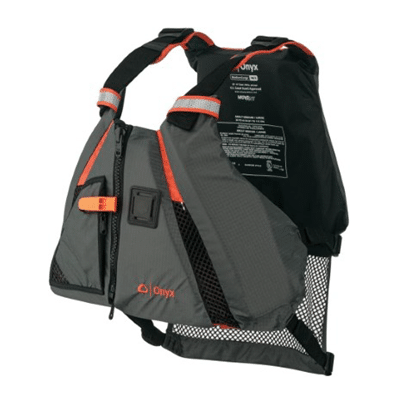Canoeing is a fantastic way to get out on the water and enjoy the great outdoors. It’s great exercise, and the slow pace and quiet really allows you to notice and appreciate the natural world around you. But there’s a bit of a learning curve, and mastering the strokes can be tricky. Lots of beginners struggle with canoeing basics, and may need some help learning how to paddle a canoe, so I’ve decided to cover the basics here. Keep reading to learn how to paddle a canoe effectively.
I’ll talk about the different canoe seat positions and their role in paddling a canoe. I’ll also explore the different types of canoe paddling you may need to know, as well as some tips to paddle correctly.
Where to Sit In a Canoe
There are different sitting techniques and positions to take when canoeing. Whichever you choose has an impact on how easily the vessel moves through the water.
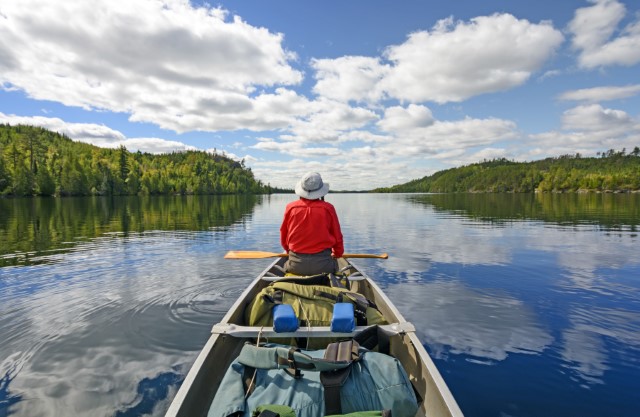
The trick is to make sure that you distribute the canoe weight evenly so that it can move freely through the water.
Where to sit in your canoe partly depends on whether you’re paddling with someone else (tandem paddling) or paddling solo.
Tandem Paddling
There are two sitting options in a tandem canoe.
Bow
Sitting in the bow is recommended for beginners. The bow is at the front of the canoe and whoever sits there gets to focus on just paddling.
Sitting at the bow helps you feel the water, become familiar with the canoe movement, and learn the best paddling techniques.
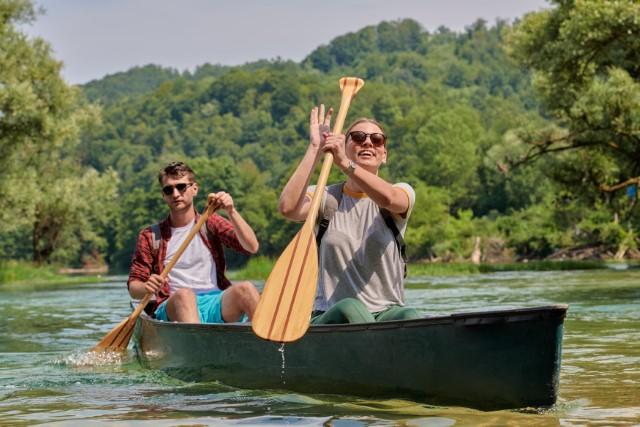
Stern
The back of the canoe is called the stern. This position is where the steering occurs, and the more experienced paddler sits.
When experienced canoers set out, the one who weighs more sits at the stern, and the extra weight helps to place the vessel deep in the water, making it easier to move.
Solo Paddling
If you’re paddling by yourself, the bow is the best place to sit. The bow seat offers more balance and stability because it’s located closer to the center of the canoe.
When I’m paddling a two-seat canoe by myself I like to sit in the front seat, facing backwards. This allows me to position my weight toward the center of the boat, but enjoy the control for steering the boat that I’m accustomed to when paddling in the stern.
By sitting in the rear (more centered) seat, I keep the bow from riding as high in the water, which makes the boat easier to paddle.
Types of Canoe Paddling Strokes
Most of these strokes come in handy when paddling solo or tandem.
Forward Stroke
To make a forward stroke, you want to fully plant the paddle’s blade in the water and pull it along the side of the canoe towards you.
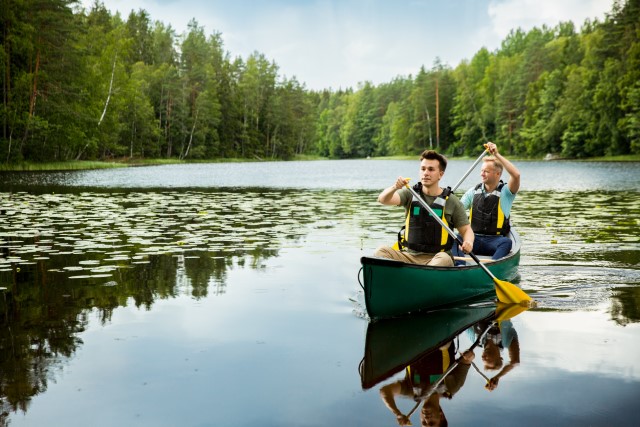
Reach forward as far as you can while maintaining your position. Keep your strokes close to the vessel while avoiding scraping the hull.
This reduces how far the canoe drifts toward the side. When paddling with this technique, strokes made towards the left will cause the vessel to move to the right and vice versa.
Backward Stroke
The backward stroke puts the canoe in reverse. Reach back using both hands and pull the paddle in the water towards the rear of your body, then pull it forward.
Ensure that the flat side of the canoe blade remains perpendicular to the vessel.
You can use this technique to slow the canoe in moving water or stop the canoe completely when you’ve already gained momentum. When combined with the forward stroke, you can use this method to pivot the canoe.
J-Stroke
Like the forward stroke, this technique lets you steer gently without changing your paddling side.
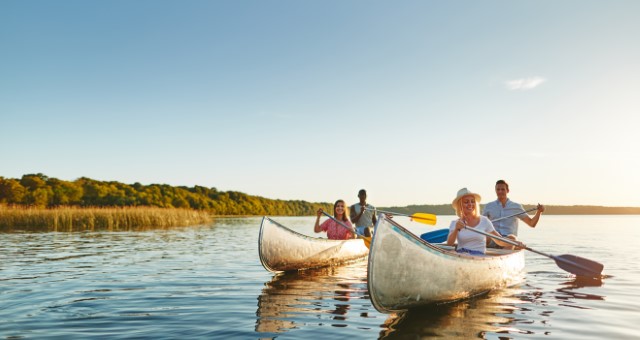
- Begin by reaching out forward as far as you comfortably can.
- Next, put your paddle in the water completely.
- Pull the blade towards you along the canoe, causing the vessel to move forward.
- Once you have done this, turn your wrist to form a J.
- At the end of each stroke, bend your wrist outward, making an imaginary J from the canoe.
This technique will help position the front tip of your canoe in line, maintaining a straight motion.
Draw Stroke
This stroke is excellent for pulling up to a dock or trying to move the canoe sideways. With your lower hand, reach out as far as possible and put the paddle in the water.
Direct your shaft hand inwards – this will help move the canoe towards your paddling side by creating leverage.
Sweep Stroke
With this technique, you sweep your paddle’s blade in an arc, turning the canoe by pushing the water. Try to keep the paddle horizontal relatively.
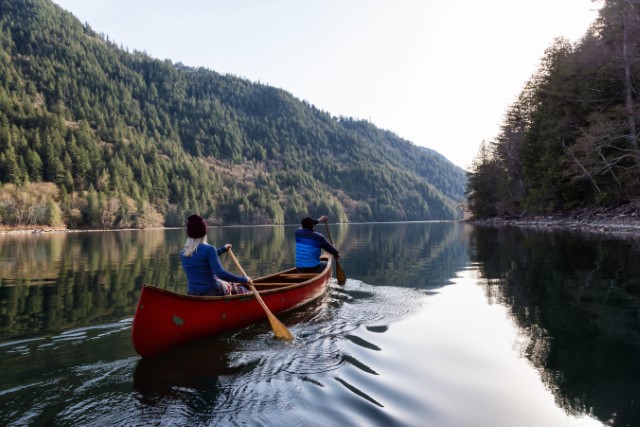
You can test different arcs to observe how quickly the canoe will turn.
Pry Stroke
The pry stroke pushes the canoe away from the side you are paddling.
- Position the paddle in the water parallel and close to the canoe.
- Hold out the paddle using your grip hand over the water.
- Next, tilt the blade till it is almost under the canoe.
- Then use your grip hand, pull the paddle, and push out with the shaft hand as if to ‘pry’ the canoe.
Strokes for Solo Canoeing
When you go solo canoeing, you’ll probably want to sit at the center of the canoe or at the bow. This positioning helps make the canoe more stable by putting the center of gravity at the lowest possible point.
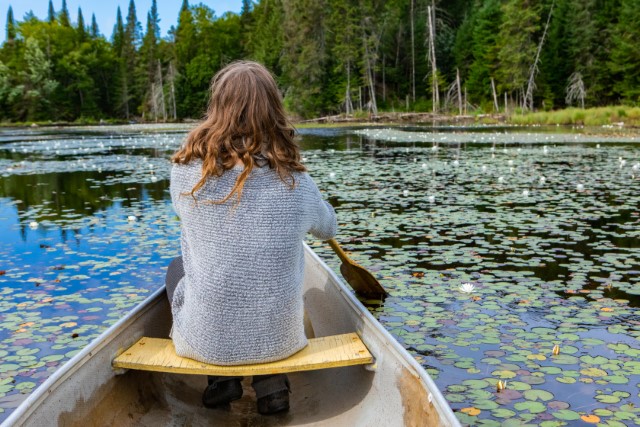
There are certain strokes that are primarily used by solo canoers. Get acquainted with them here.
C-Stroke
For the c-stroke:
- Start like you would with a draw-stroke, then form an arc pulling the paddle inward, stopping just beneath the canoe.
- Round this up with a short burst outward, just like the J-stroke.
Sculling Draw
This technique is primarily for solo paddling. You can also use it for moving the canoe sideways while in shallow water.
- Set the paddle about two feet in front of you in the water, turning the blade tip away from the canoe and pulling backward.
- Once you complete the stroke, repeat the rotation, pushing the water forward to move your canoe towards your paddle.
- When done right, this stroke should form a figure 8 in the water while keeping the blade almost parallel to the vessel’s body.
Proper Paddling Techniques and Tips
Paddling a canoe can be quite a tricky job, especially for newbies. Learn how to paddle correctly from the beginning, and you’ll be more likely to keep your strength for extended periods on the water.
Here are a few tips to help you maintain your strength and prevent you from getting sore while paddling.
Learn to Grip Correctly
When learning to paddle, the first thing you need to have is a proper paddle grip.
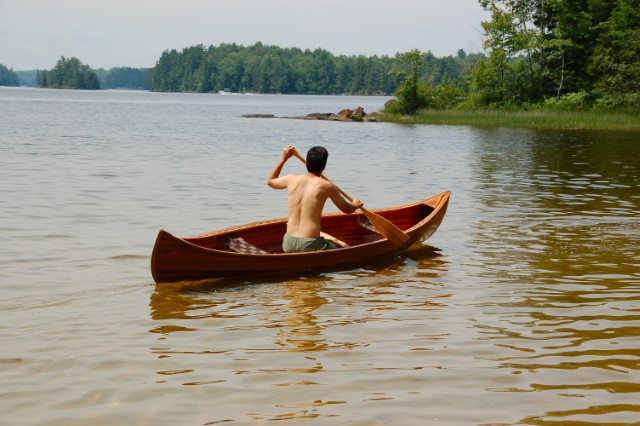
To hold your paddle correctly, begin by placing your upper hand on the top grip. Your lower hand should be positioned near the paddle’s end.
Many beginners make the mistake of gripping the paddle too high or too low. Unfortunately, paddling is strenuous when your arms aren’t in the right position, and you’ll be left with sore shoulders.
Try to keep your knuckles level with your shoulder for a firmer, more relaxed grip.
Utilize Torso Strength
With every stroke, rotate your torso and not just your shoulders and arms. When turning your torso, you twist at the waist to wind up your body, with your chest facing the canoe’s opposite direction.
The unwinding of your upper body powers each stroke. Your lower body helps stabilize the vessel, while your upper body is responsible for controlling the paddle.
Your arm muscles can get tired quickly, so make sure you use the power contained in the upper half of your torso.
Keep Your Arms Where You Can See Them
Keep your arms in your line of vision. This means that you’ll be able to make the most effective strokes while keeping your arms in a comfortable position.
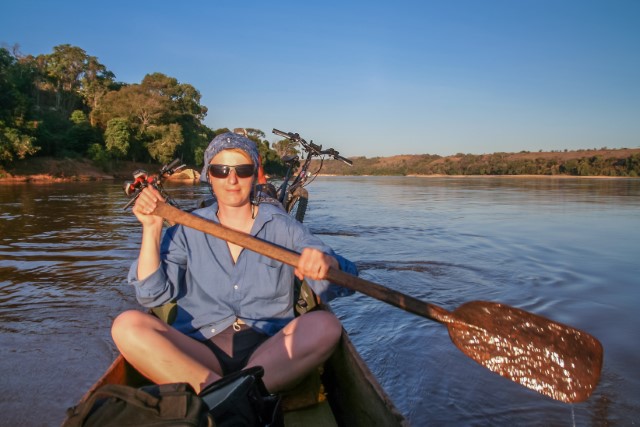
Imagine that your arms, chest, and paddle come together to form a box. Task yourself with keeping this box intact during every stroke.
Keeping your arms where you can see them is a great way to ensure that you utilize torso strength. Every time you reach toward the back of your canoe to take a stroke, your entire upper body has to move to keep your arms in sight.
Choose the Right Paddle
When choosing a paddle for your canoe, the ideal choice should be the shortest length that still allows you to work the water comfortably.
Shorter paddles are great for narrow canoes, while wider canoes pair well with paddles that have a more elongated shaft. When measuring the height of your paddle, the grip hand should meet the tip of your nose mid-stroke.
Final Thoughts
Canoeing is a fun way to relax and enjoy nature alone or with friends. I hope you find this guide helpful, especially if you’re a paddling newbie.
Now you know about all the different essential canoe paddling strokes. Take your time practicing them before you go on your canoe adventure.
Make sure you learn the strokes I talked about here and make them part of your canoeing repertoire. You’ll be glad you did!
And don’t give up! Remember, practice makes perfect.

